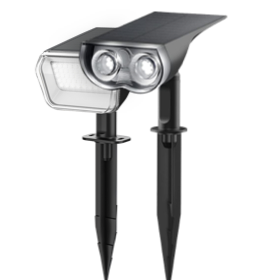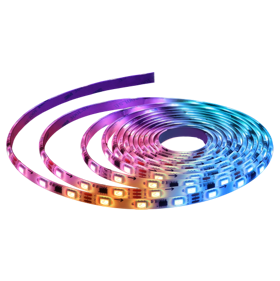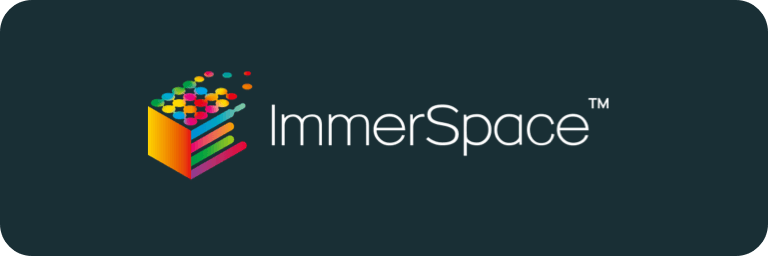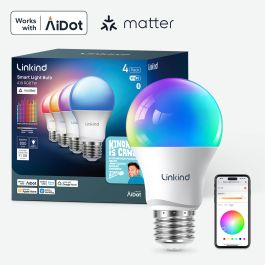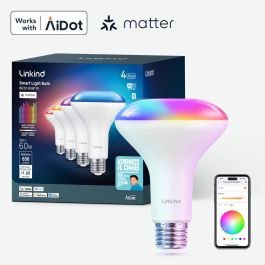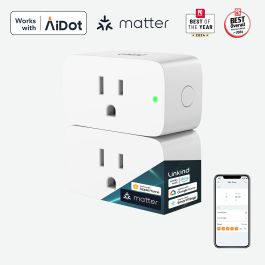Demystifying Matter Smart Home Technology: Unlocking the Future of Connected Living
Demystifying Matter Smart Home Technology: Unlocking the Future of Connected Living
Imagine a world where your home seamlessly adapts to your needs, where all your smart devices work together harmoniously, and where privacy and security are paramount. This vision is becoming a reality with Matter Smart Home Technology. In this article, we will take a deep dive into Matter Smart Home and explore its transformative potential in unlocking the future of connected living. From understanding its core principles to exploring the wide range of Matter-enabled devices, we will demystify Matter and discover the limitless possibilities it offers.
Understanding Matter Smart Home Technology
1. What is Matter?
Matter, the advanced smart home standard backed by the Connectivity Standard Alliance (CSA), seamlessly connects diverse smart home ecosystems. Ensuring compatibility across your devices. No more concerns about compatibility—Matter unifies your smart home experience, enabling all your products to work together effortlessly.
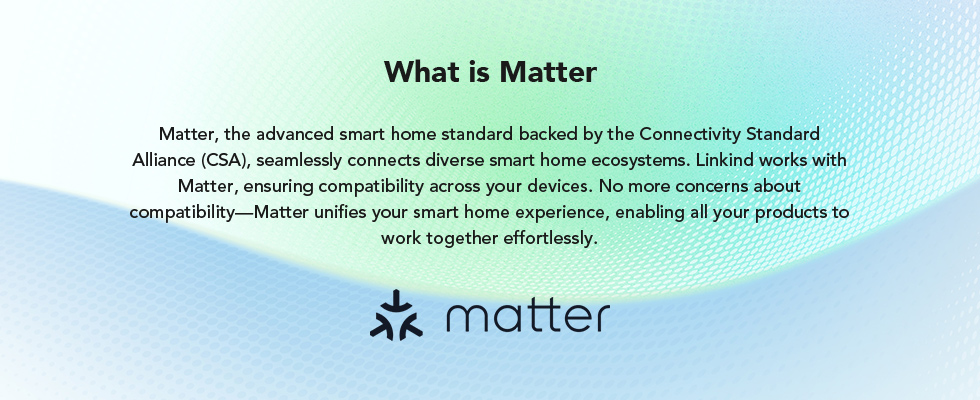
2. The significance of Matter in the smart home ecosystem?
The Challenge in the Smart Home Industry
In the ever-expanding landscape of smart home devices, one of the biggest challenges has been the lack of compatibility and interoperability among different brands and protocols. This fragmentation has made it difficult for consumers to build a cohesive smart home ecosystem, as devices often operate in silos and require separate apps or hubs to function.
The Significance of Matter in the Smart Home Ecosystem
This is where Matter comes in as a game-changer. By providing a standardized framework, Matter allows devices from various manufacturers to communicate and work together seamlessly. Regardless of the brand or protocol they use, Matter-certified devices can connect and interact with each other, eliminating the need for multiple hubs or complex setup processes.
The significance of Matter lies in its ability to simplify the smart home industry. With Matter, consumers have the freedom to choose the devices that best suit their needs, knowing that they will work harmoniously within their smart home ecosystem. This open and unified approach enhances the user experience and removes the frustration of dealing with incompatible devices.
Moreover, Matter promotes innovation by fostering collaboration among major technology companies. By working together to establish a common standard, these companies drive the development of new and improved smart home solutions. This results in a wider selection of devices and greater competition, ultimately benefiting consumers with more advanced and affordable options.
Another significant aspect of Matter is its focus on privacy and security. With the increasing concerns surrounding data protection in smart home devices, Matter prioritizes user privacy by implementing robust security measures. By adhering to strict security standards, Matter-certified devices provide users with peace of mind, knowing that their personal information and sensitive data are safeguarded.
Overall, the significance of Matter in the smart home ecosystem cannot be overstated. It brings order to the fragmented landscape, simplifies device compatibility, fosters innovation, and prioritizes user privacy. As a standardized framework, Matter unlocks the full potential of connected living, allowing homes to become smarter, more efficient, and more enjoyable for users.
The Evolution of Smart Home Standards
In the rapidly evolving world of smart homes, the development of standardized protocols has been crucial to ensure seamless integration and compatibility among devices. Let's take a closer look at the history of smart home standards and how Matter has emerged as a unified and interoperable solution.
1. Exploring the history of smart home standards.
Smart home technology has come a long way, starting with the introduction of early protocols such as X10, Insteon, and Zigbee. These protocols allowed basic communication between devices but lacked a standardized framework, resulting in limited interoperability.
As technology advanced, new standards like Z-Wave and Zigbee emerged, offering more robust capabilities and improved interoperability. However, the proliferation of multiple protocols created a fragmented ecosystem, making it challenging for consumers to choose compatible devices and build a cohesive smart home setup.
2. Introducing Matter as a unified and interoperable solution.
Recognizing the need for a unified approach, major players in the industry, including Apple, Google, Amazon, and others, came together to develop Matter. Formerly known as Project CHIP (Connected Home over IP), Matter is an open-source smart home standard that aims to simplify device connectivity and enhance interoperability.
Matter offers a common language for devices, enabling them to seamlessly communicate with each other. By adopting the IP (Internet Protocol) as its foundation, Matter allows devices to connect to a home network effortlessly. This means that Matter-compatible devices can work harmoniously, regardless of the brand or protocol they use.
One of the key advantages of Matter is its focus on backward compatibility. Existing smart home devices can be retrofitted with Matter compatibility, eliminating the need to replace entire systems. This makes it easier for homeowners to transition to the Matter ecosystem without significant disruption.
Matter also prioritizes security and privacy. With built-in encryption and stringent certification processes, it ensures that data transmitted between devices remains secure. Users can have peace of mind knowing that their personal information and smart home interactions are safeguarded.
By introducing a unified and interoperable solution, Matter addresses the challenges posed by fragmented smart home standards. It streamlines the process of selecting and integrating devices, empowering homeowners to create a seamless and connected living experience.
How does Matter operate within a smart home ecosystem?
To fully understand how Matter operates within a smart home ecosystem, it's essential to explore the underlying principles and architecture of this groundbreaking technology. Matter utilizes two types of controllers: those with Wi-Fi connectivity and those with Thread connectivity.
1. Matter controllers with Wi-Fi
Wi-Fi is a widely adopted wireless technology that enables devices to connect to the internet and local networks. Matter controllers with Wi-Fi offer a convenient way to integrate devices into the smart home ecosystem. These controllers leverage the existing Wi-Fi infrastructure in homes, allowing for easy and reliable connectivity.
By incorporating Wi-Fi into Matter controllers, users can control and monitor their smart home devices through a single network. This eliminates the need for separate hubs or complicated setup processes, streamlining the overall user experience.
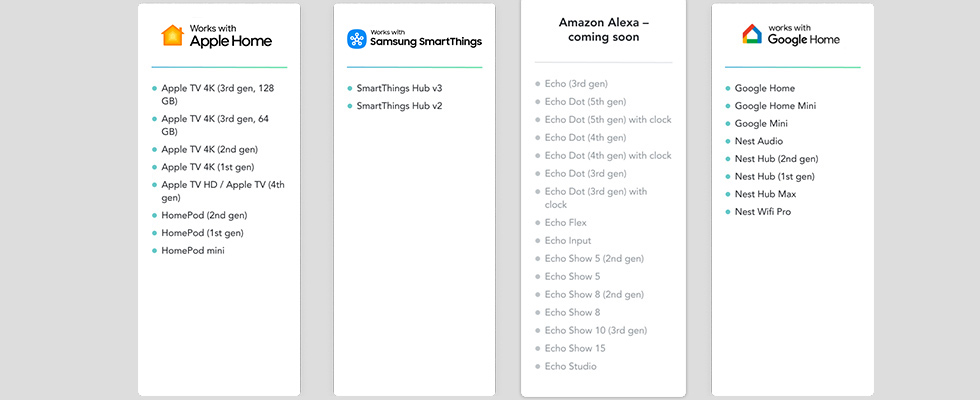
2. Matter controllers with Thread
Thread is a low-power, wireless mesh networking protocol designed specifically for smart home devices. It offers reliable and secure communication, ensuring that devices within the network can communicate seamlessly.
Matter controllers with Thread utilize this robust protocol to create a mesh network of smart home devices. This enables devices to transmit data efficiently and extend the range of the network. With Thread, users can enjoy a reliable and responsive smart home experience, even when devices are spread throughout the house.
By incorporating both Wi-Fi and Thread controllers, Matter provides flexibility and compatibility across a wide range of devices. Whether a device supports Wi-Fi or Thread, it can seamlessly connect and communicate within the Matter ecosystem.
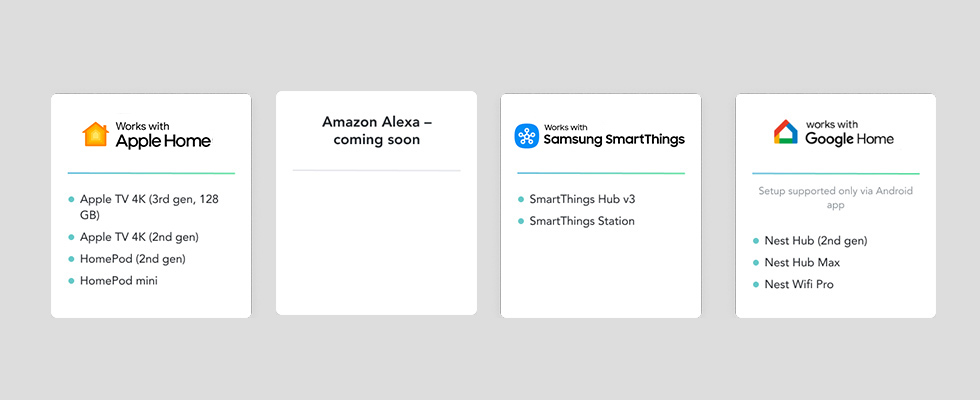
Setting Up a Matter Smart Home
Setting up a Matter smart home is an exciting journey that involves selecting the right products, configuring and connecting devices, and ultimately experiencing the enhanced user experience that Matter offers. Let's dive into the process step by step.
1. Choosing Matter-compatible products
When building your Matter smart home, it's crucial to choose devices that are Matter-compatible. These devices adhere to the Matter standards, ensuring seamless integration and interoperability within the ecosystem. One excellent example of a Matter-compatible product is the Linkind A19 matter light bulbs.
Linkind A19 Matter light bulbs are not only energy-efficient but also compatible with other Matter-enabled devices. These smart bulbs can be easily controlled using a Matter-supported hub or app, providing a unified and convenient user experience.
When selecting Matter-compatible products, consider your specific needs and preferences. Whether it's smart lighting, thermostats, door locks, or other devices, ensure that they are labeled as Matter-compatible to guarantee effortless connectivity and compatibility.
2. Configuring and connecting devices within the ecosystem
Once you have chosen your Matter-compatible products, it's time to configure and connect them within your smart home ecosystem. The exact process may vary depending on the specific devices you have, but the following general steps can guide you:
-
Ensure that your Matter-supported hub or app is properly set up and connected to your home network.
-
Follow the manufacturer's instructions to configure each Matter-enabled device. This may involve scanning QR codes, entering setup modes, or following on-screen prompts.
-
Use the Matter-supported hub or app to add and discover the devices within your ecosystem. This step allows the devices to be recognized and controlled within the Matter ecosystem.
-
Once the devices are discovered, you can personalize their settings, create automation routines, and control them individually or as part of groups.
Matter simplifies the device configuration and connection process by providing a unified platform. This means that you can manage all your Matter-compatible devices through a single hub or app, eliminating the need for multiple control interfaces.
3. Enhanced User Experience with Matter Smart Home
One of the primary benefits of setting up a Matter smart home is the enhanced user experience it offers. With Matter, you can expect the following advantages:
- Seamless interoperability: Matter ensures that devices from different brands can seamlessly communicate and work together. This eliminates compatibility issues and allows you to mix and match devices to suit your preferences.
-
Simplified control: With Matter, you can control all your smart home devices through a single interface. Whether it's adjusting lighting, temperature, or security settings, you can do it all from one centralized hub or app.
-
Streamlined automation: Matter enables you to create automation routines and scenes that automate various tasks based on predefined conditions or triggers. This makes it easy to set up personalized and convenient automation within your smart home.
-
Future-proofing: By investing in Matter-compatible devices, you future-proof your smart home setup. As the Matter ecosystem continues to grow, you can seamlessly integrate new devices and technologies into your existing setup.
Setting up a Matter smart home is an exciting and rewarding process. By choosing Matter-compatible products, configuring and connecting devices, and embracing the enhanced user experience, you'll unlock the full potential of your connected living space.
Privacy and Security in Matter Smart Home
In the age of connected living, privacy and security are paramount concerns for homeowners. When it comes to Matter smart homes, these concerns are taken seriously, and the technology is designed with robust measures to protect user privacy and ensure data security. Let's explore the key aspects of privacy and security in Matter-enabled devices.
1. Addressing privacy concerns associated with smart home technology
Matter Smart home technology, including Matter-enabled devices, collects and processes data to provide personalized experiences and automation. However, this data collection raises concerns about privacy and how the information is used. The Matter standard addresses these concerns by prioritizing user privacy and providing transparency.
Matter ensures that users have control over their data and how it is shared. It establishes clear guidelines for data collection, storage, and usage, requiring manufacturers to obtain user consent and adhere to privacy regulations. This means that your personal information and smart home data are safeguarded, and you have the power to determine how your data is utilized.
2. Data protection and user privacy in Matter-enabled devices.
Matter-enabled devices are designed to prioritize data protection and user privacy. Here are some key measures that contribute to a secure and private smart home ecosystem:
-
End-to-end encryption: Matter utilizes end-to-end encryption to secure communication between devices and hubs. This ensures that your data remains confidential and protected from unauthorized access.
-
Local processing: Matter emphasizes local processing, meaning that sensitive data is processed within your home rather than being sent to cloud servers. This approach minimizes the risk of data breaches and enhances privacy.
-
Granular permissions: Matter allows users to define granular permissions for their devices and data. You have control over which devices can access specific data, ensuring that your privacy preferences are respected.
3. Security measures and best practices for a secure Matter Smart Home.
To maintain a secure smart home environment, it is essential to implement security measures and follow best practices. Here are some recommendations:
-
Secure network: Ensure that your home network is secure by setting a strong and unique password for your Wi-Fi router. Regularly update the router's firmware to benefit from the latest security patches.
- Device authentication: Enable device authentication features provided by your Matter-supported hub or app. This adds an extra layer of security by requiring devices to authenticate before being granted access to your smart home ecosystem.
- Regular updates: Keep your Matter-enabled devices up to date with the latest firmware and software updates. Manufacturers often release updates that address security vulnerabilities and improve device performance.
Future Trends and Innovations in Matter
Emerging advancements and developments in the Matter ecosystem.
As the adoption of Matter technology grows, so does the potential for future advancements. Here are some exciting trends and innovations to watch out for:
- Expanded device support: The Matter ecosystem is expected to see an expansion in device support, with more manufacturers integrating Matter compatibility into their products. This means a wider range of devices will be available, giving users more options to create a personalized and interconnected smart home environment.
-
Improved interoperability: Interoperability is a key focus for Matter, and future developments will further enhance the seamless communication between devices from different brands. This means you'll have the freedom to mix and match devices without worrying about compatibility issues, ultimately creating a more flexible and adaptable smart home ecosystem.
-
Enhanced user experiences: As the Matter ecosystem matures, user experiences will continue to improve. This includes advancements in voice control integration, automation capabilities, and intuitive interfaces that make it even easier to manage and control your smart home.
Summary
Matter Smart Home Technology is revolutionizing the way we interact with our homes, bringing us closer to a seamlessly connected living experience. By providing a standardized framework and prioritizing compatibility, interoperability, privacy, and security, Matter simplifies the smart home ecosystem and empowers users to create personalized, efficient, and enjoyable living spaces. With expanded device support, improved interoperability, and enhanced user experiences on the horizon, the future of Matter holds immense potential for convenience, flexibility, and innovation.
FAQs
1. Can I use Matter-enabled devices with my existing smart home setup?
Yes, Matter is designed to be backward compatible, meaning that existing smart home devices can be retrofitted with Matter compatibility. This allows for easy integration into your existing setup without the need to replace your entire system.
2. How does Matter ensure the privacy and security of my data?
Matter incorporates robust security measures such as end-to-end encryption, local processing of data, and granular permissions. These measures protect your personal information and smart home interactions, ensuring that your data remains secure and private.
3. What are the benefits of using Matter-compatible devices?
Using Matter-compatible devices offers several benefits, including seamless interoperability between devices from different brands, simplified control through a single interface, streamlined automation capabilities, and future-proofing your smart home setup for upcoming advancements.
4. Can I mix and match devices from different brands within the Matter ecosystem?
Yes, Matter promotes interoperability, allowing you to mix and match devices from different brands without compatibility concerns. This gives you the freedom to choose the devices that best suit your needs and preferences.
5. What can we expect from the future of Matter Smart Home Technology?
In the future, we can expect expanded device support, meaning more manufacturers will integrate Matter compatibility into their products, resulting in a wider range of devices to choose from. Improved interoperability will further enhance seamless communication between devices. Additionally, user experiences will continue to improve with advancements in voice control integration, automation capabilities, and intuitive interfaces.












